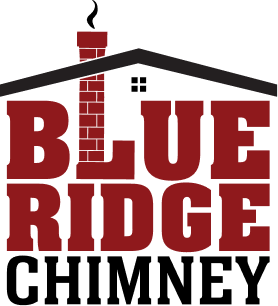Every time you light a fire in your fireplace, carbon monoxide is produced as one of the byproducts of combustion. This toxic gas is also present any time you burn fuel in stoves, furnaces, gas ranges, grills, automobiles, and other appliances. What makes carbon monoxide so dangerous? You cannot smell, taste, or see this gas. If your fireplace, stove, furnace, or other heating appliance has a problem that causes it to overproduce carbon monoxide, it can build up inside your home without you realizing it. This can lead to a serious health issue – carbon monoxide poisoning! At Blue Ridge Chimney Services, our top priority is customer safety. So, we would like to answer a couple of frequently asked questions about this toxic gas. By doing this, it will help you avoid suffering from this syndrome.
What are the symptoms of carbon monoxide poisoning?
If you have low levels of carbon monoxide in your blood, you may have a headache, chest pain, and an upset stomach. This is according to the Centers for Disease Control and Prevention (CDC). You may also feel dizzy, weak, tired, and/or confused. Since these symptoms are very similar to those of the flu, carbon monoxide poisoning is often misdiagnosed. If you are suffering from these symptoms for longer than a week or two without any improvement, you should ask your doctor to test your blood for carbon monoxide levels. If you continue to be exposed to this toxic gas, you are at risk for serious health issues, including organ damage and even death.
How do I prevent carbon monoxide poisoning in my home?
The most important thing to do to avoid exposure to this poisonous gas? Installing battery-powered carbon monoxide detector alarms in key spots in your home! These spots include the rooms where your fireplace and other types of heating appliances are located. Also, outside of each bedroom. If you have a multi-story home, you should install at least one alarm on each level. You can find detectors that can give you a digital reading of the levels of this gas in your home, as well.
However, all you really need to avoid carbon monoxide poisoning? Have an alarm sound to alert you of the presence of high levels in the air you are breathing. To be certain your alarms are working properly, the CDC recommends checking the batteries when you change your clocks in the spring and fall. Every five years, you should replace your detectors to ensure your safety. If your alarm should sound, you should immediately evacuate everyone from your home and call emergency authorities from outside the house.
Blue Ridge Chimney Services can also help you prevent carbon monoxide poisoning with our professional chimney maintenance services. Avoiding this health hazard is one of the most important reasons why you need to have your chimney swept and inspected annually. Contact us today to schedule an appointment with our Chimney Safety Institute of America (CSIA)-certified chimney sweeps. We will make sure your fireplace and chimney are working safely with no problems. Especially problems that could cause an overproduction of carbon monoxide to leak into your home!
